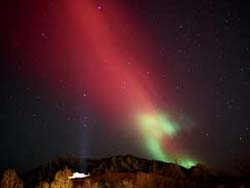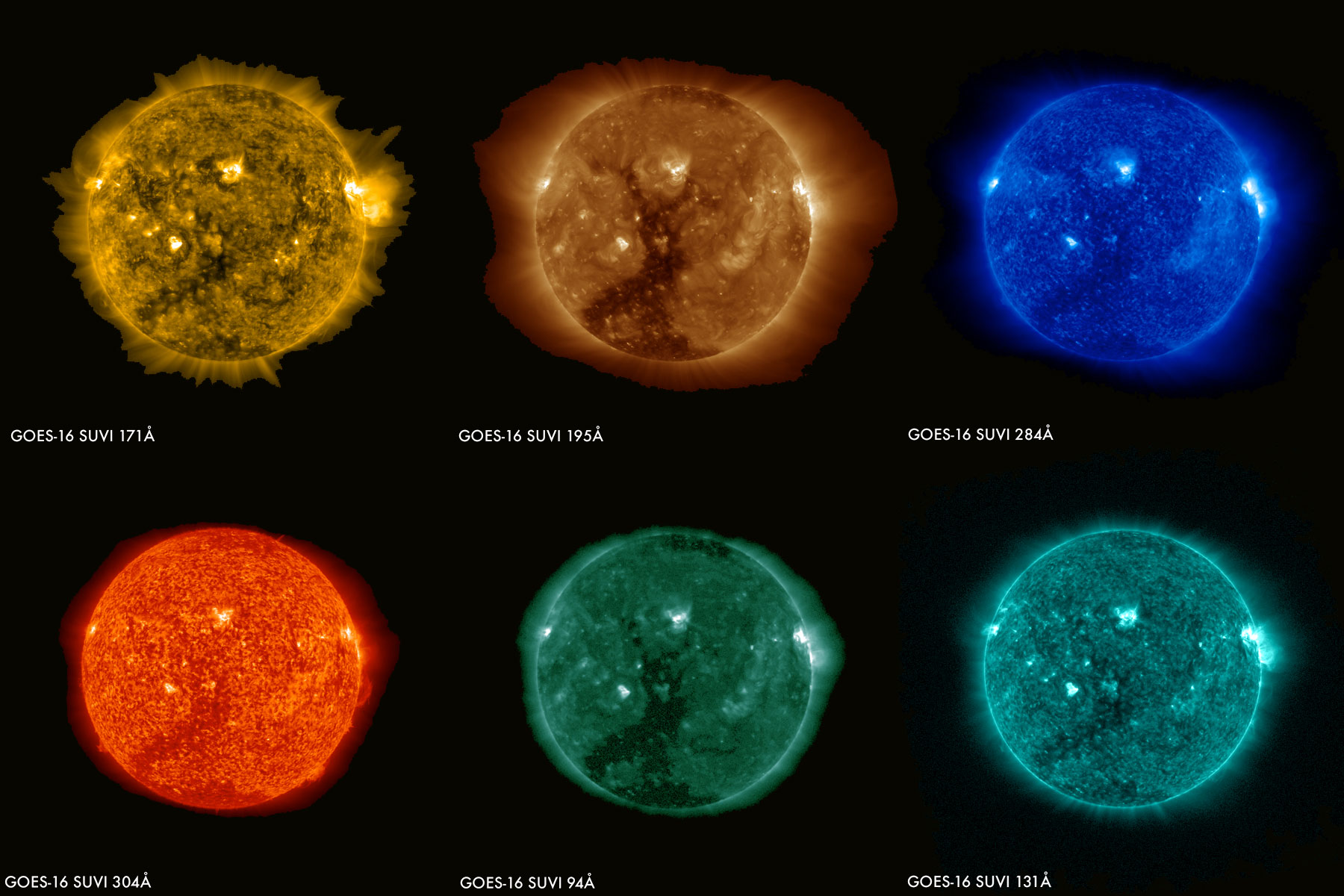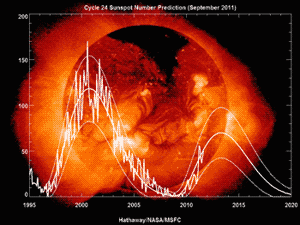It was a strange and (solar) stormy night . . .

Aurora over Boulder, Colo., during the Halloween Storms in 2003, Credit Stan Soloman, NCAR
It is a sticky August night in Florida. Typical, but for one thing. Bright red and green curtains of light dance in the sky. Is the swamp on fire?
No. The Aurora Borealis, or Northern Lights, are lighting up the sky. It is 1859, and few people in Florida have ever seen an aurora. They are amazed and frightened.
A few days later, on September 1, English astronomer Richard C. Carrington is studying a group of sunspots (through dark filters that protect his eyes, of course). Around 11:00 AM, he sees a sudden flash of intense white light from the area of the sunspots. Seventeen hours later, the night sky in North America and as far south as Panama in Central America lights up like daytime. It is another wave of even brighter Auroras. People read newspapers by the light. Gold miners in the Rocky Mountains wake up and make coffee, bacon and eggs at 1:00 AM, thinking the Sun has risen on a cloudy morning.
But stranger things than these are happening.
Instruments that measure changes in Earth's magnetism are acting crazy, their needles pinned off-scale. Spikes of electricity surge into the world's telegraph systems, and no one can send a message.

These images of the sun were captured at the same time on January 29, 2017 by the six channels on the SUVI instrument on board GOES-16. Each channel observes the sun at a different wavelength, allowing scientists to detect a wide range of solar phenomena important for space weather forecasting.
What is going on?
In 1859, even scientists didn't understand what caused auroras and the electrical and magnetic disturbances that went with them. Eventually they figured out that auroras are caused by violent events on the Sun. These solar storms can blast out huge clouds of electrified gas and dust at up to 2 million miles per hour. If this high-energy blast of particles reaches Earth, it can temporarily distort and disrupt Earth's magnetic field.
What if this 1859 solar storm happened today?

Solar activity is on an 11-year cycle. During solar maximum, there are the most sunspots and the most solar storms—that is, the worst space weather.
Back then, the telegraph was just about the only communication technology they had. Today, such a storm could severely damage satellites, disable communications by telephone, radio, and TV, and cause electrical blackouts over whole continents. It could takes weeks or longer to fix the damage.
Solar storms like the one in 1859 happen only about every 500 years—thankfully. But smaller storms happen frequently, and storms half as intense as the 1859 storm happen about every 50 years.
If we have warning that a solar storm is on its way, we can take steps to protect electrical grids, communications systems, and satellites in Earth orbit. And we can warn astronauts on the International Space Station. During a solar storm would not be a good time to go for a space walk.
The GOES-R series weather satellites monitor the Sun for solar storms and warn us of incoming danger. People who operate other satellites can postpone any tasks or maneuvers that might expose their satellite to greater damage by the electrical particles and extra radiation from the Sun during that time. However, the GOES-R series weather satellites are more exposed to these dangers than most other satellites, because they orbit so far out in space.
While most satellites are just a few hundred miles above Earth, the GOES-R series satellites are 22,300 miles out in space. That usually puts them outside Earth's protective magnetic field. So the GOES-R series satellites have a special system of gradually darker "sunglasses" to give them extra protection from the harmful effects of solar storms and "bad space weather."
Because the GOES-R series satellites are the lookouts for other satellites, they have to be really tough and able to protect themselves first.




